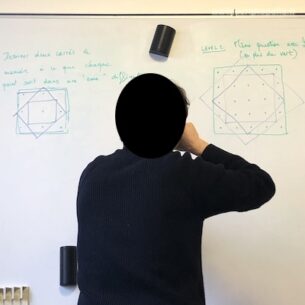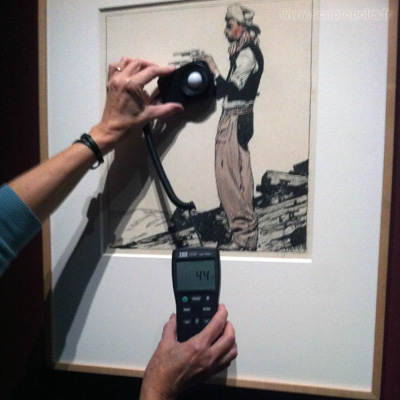Morning lights
Museums are not very different from laboratories. A lot of things have to be controlled within their environment to make these venues fully functional. Of course, each exhibition has its specificities, regarding the kind of artworks they are dealing with, especially since installations in their extreme variety have become essential in contemporary arts. But even in traditional configurations, framing such things as indoor temperature or vibrations is crucial to maintain the material integrity of paintings, photographs or sculptures. For instance, if you have seen the beautiful Edward Hopper exhibition in Le Grand Palais last year and were amongst the first visitors of the day, you probably encountered two ladies with a trolley, some cloths, forms and an instrument one of them used to measure the intensity of light exposure. Each morning, she would do the same ritual, placing the cell in different points in the surface of drawings and paintings, noting the numbers in a form.
If you would ask her why she has to do it, of course she would have insist on the fragility of every piece of art. A lot of the controls made in museum deal with such vulnerability and the necessity to preserve artworks. But, you would also learn that these measures have to be done on a daily basis because, even in such a closed environment, particularly dark, light is changing. Every morning these changes have to be controlled and, if needed, small adjustments have to be made. Measures and adjustments that ensure light to remain the same. Measures and adjustments that daily produce the stability and consistency that the early drawings of Hopper need to last forever.







